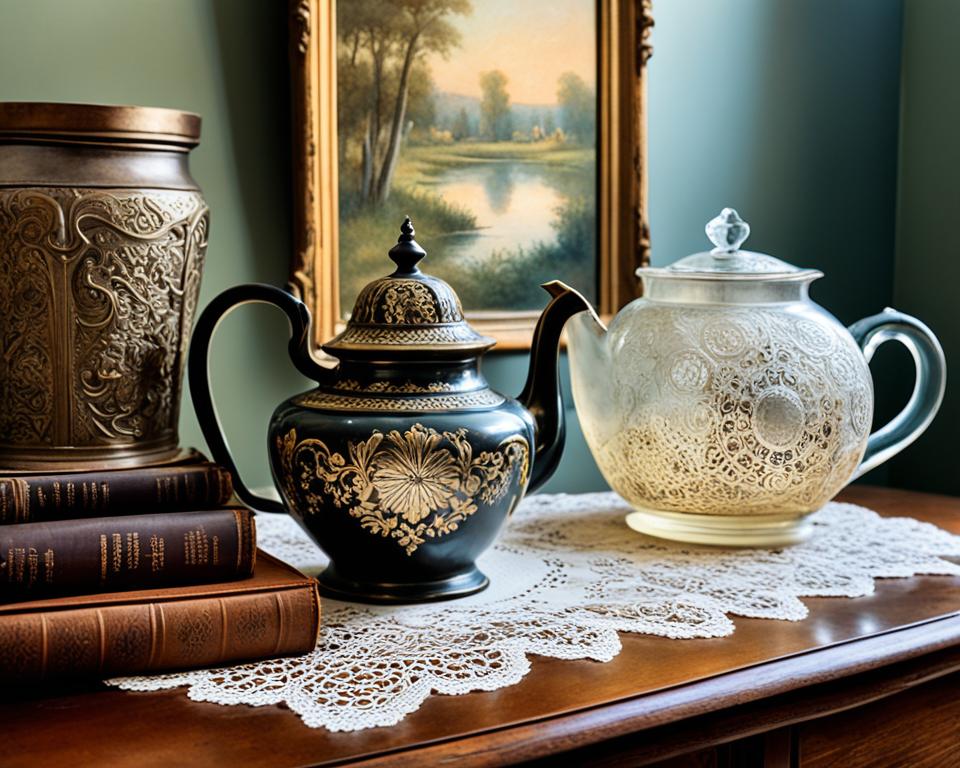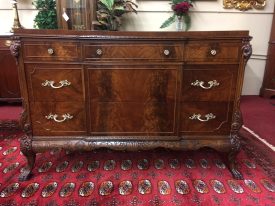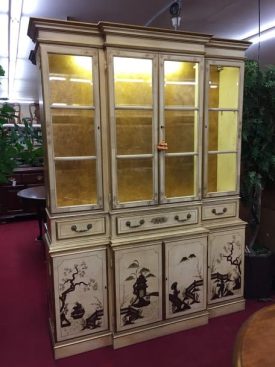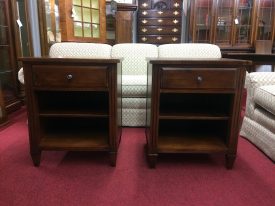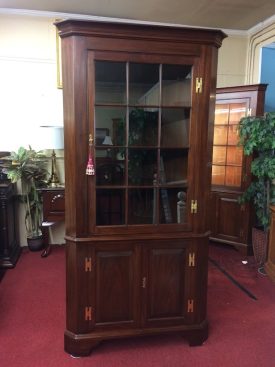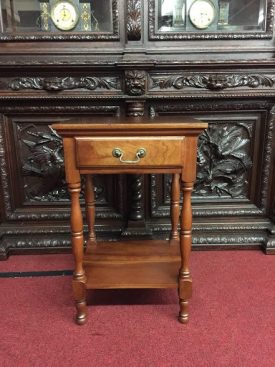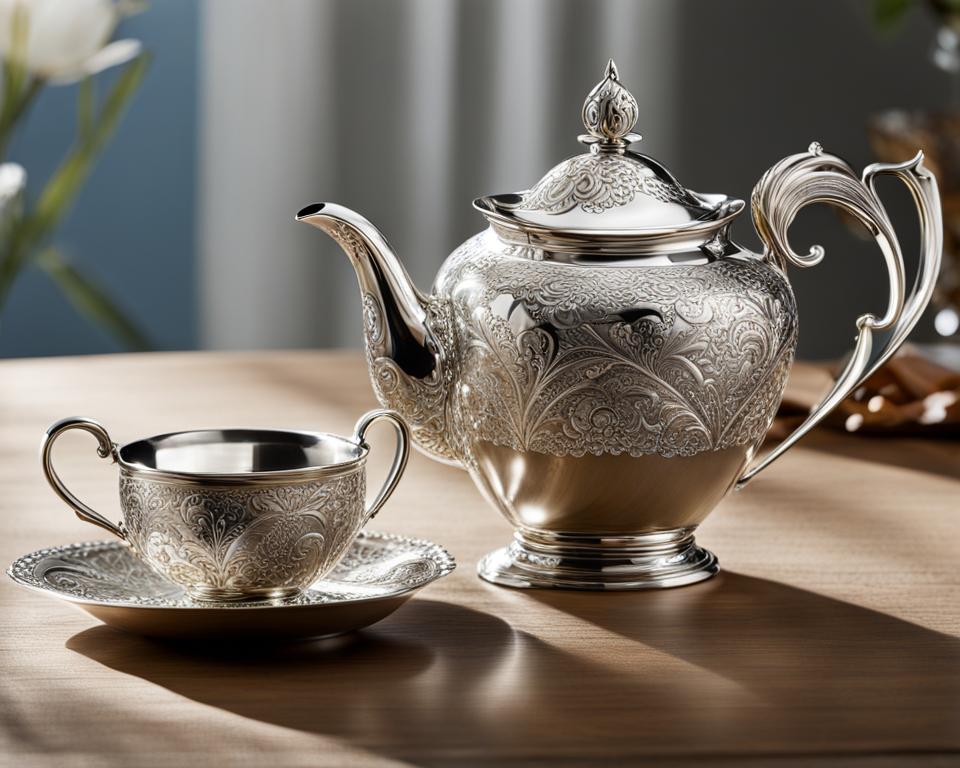Provenance holds a significant place in the world of antique decor as it plays a crucial role in the valuation of these timeless pieces. The term provenance refers to the history and origin of an antique item, encompassing its ownership, documentation, and any relevant details. By understanding the provenance, collectors and buyers can determine the authenticity, age, and historical significance of an antique decor item.
Key Takeaways:
- Provenance provides evidence of an antique item’s authenticity, age, and historical significance.
- The reputation and expertise of past owners can greatly influence the appraisal and selling price of an antique.
- Well-documented provenance enhances the value and desirability of antique decor items.
- Provenance adds depth and meaning to the history of a piece, connecting it to specific time periods and cultural contexts.
- Buyers and collectors place great importance on provenance to ensure the quality and investment potential of their antique acquisitions.
The Importance of Provenance in Antique Valuation
Provenance is considered imperative in antique valuation, especially for very old items. It is essential to research and establish the history of an antique to ensure its authenticity and age. Provenance provides valuable insight into the item’s origin, previous owners, and any significant events or associations related to it. The more detailed and well-documented the provenance, the higher the value and desirability of the antique item.
Understanding the provenance of an antique is like unraveling its story, connecting it to the past and giving it a sense of historical significance. It allows collectors and buyers to make informed decisions based on the item’s heritage and authenticity. Without provenance, an antique may simply be viewed as a decorative object without any historical context or cultural relevance.
For collectors, the provenance of an antique adds an extra layer of value and prestige. It validates the item’s historical importance and enhances its desirability in the market. Collectors are often willing to pay a premium for antiques with well-established and well-documented provenance.
The Role of Provenance in Authenticity
Provenance plays a crucial role in determining the authenticity of an antique. It serves as evidence that the item is genuine and not a reproduction or forgery. The documentation that accompanies an antique’s provenance provides a trail of ownership and historical evidence, establishing its credibility in the eyes of experts and collectors.
When evaluating an antique’s provenance, experts look for consistent and reliable documentation that spans its entire history. This includes sales receipts, inventory records, letters, photographs, and any other relevant documentation. The more comprehensive and well-preserved the provenance, the more confidence it instills in the authenticity of the antique.
The Impact of Historical Significance
Provenance also contributes to the historical significance of an antique. Knowing the item’s connection to specific individuals, events, or periods adds depth and meaning to its value. For example, a piece of furniture owned by a famous historical figure or used in a significant historical event holds greater appeal and value than an otherwise similar piece without such associations.
Historical significance can be particularly influential in the valuation of items that were part of cultural movements or artistic periods. The provenance of antiques from renowned artists or renowned workshops can significantly increase their value due to the prestige and impact of their creators.
“A detailed provenance provides a wealth of information about an antique item, making it more than just a decorative piece. It transforms the item into a tangible piece of history.” – Sarah Thompson, Antique Appraiser
Enhancing the Value of Antiques
Provenance is a critical factor in determining the value of antiques. Auction houses, antique dealers, and collectors heavily rely on the provenance of an item during its appraisal and pricing process. An item with a reputable provenance can command higher prices due to its historical and cultural significance.
Furthermore, provenance can create a sense of trust and confidence among buyers, especially those who value the long-term investment potential of antiques. An item with a well-documented and prestigious provenance is seen as a safe and valuable asset, likely to appreciate in value over time.
| Benefits of Provenance in Antique Valuation | Examples |
|---|---|
| Enhanced authenticity | Provenance documentation verifying an antique’s origin and history |
| Higher desirability | Antiques with detailed provenance from famous artists or historical figures |
| Increased market value | Antiques with reputable and extensive provenance commanding higher prices |
| Long-term investment potential | Antiques with well-documented provenance viewed as valuable assets |
Ultimately, the importance of provenance in antique valuation is undeniable. It not only validates an antique’s authenticity but also amplifies its historical significance and cultural relevance. Collectors and buyers are willing to invest in antiques with a well-established provenance, recognizing the value that comes from owning a piece of history.
The Significance of Provenance Beyond 1830
While the Industrial Revolution in 1830 is often considered a turning point for antique decor, provenance still holds significance beyond this date. Provenance adds historical relevance and authenticity to antique items, regardless of their age. It helps to establish the item’s connection to a certain time period, cultural context, or specific artistic movement.
When considering antique decor, provenance goes beyond the creation date of the piece. It provides a glimpse into the history and story behind the item, allowing collectors and enthusiasts to appreciate its place in a broader historical context. Provenance helps to capture the essence of eras and artistic movements, shedding light on the evolving styles and tastes of different time periods.
For example, a 19th-century chair may not have been created during an illustrious historical event or by a famous craftsman, but if it can be traced back to a significant cultural milieu or an influential artistic movement, its provenance adds value and interest.
By understanding the provenance of antique decor, collectors can better appreciate the craftsmanship, design elements, and historical relevance of each piece. It allows them to form a deeper connection with the item and the stories it carries, making it more than a mere object of decoration.
“Provenance provides the history of an antique, transforming it from an anonymous object into a treasure with roots in the past.”
In this context, provenance helps antique decor come alive, inviting individuals to step into the historical footsteps of the piece and imagine its journey through time.
Authenticating Provenance for Antique Decor
When it comes to establishing provenance for antique decor items created beyond 1830, a comprehensive approach is necessary. It entails thorough research, documentation, and expert assessment to uncover the item’s history and determine its artistic and historical significance.
One essential aspect is researching the origins of the piece, which involves tracing its ownership history and identifying any notable previous owners. This can be accomplished through various sources such as estate inventories, personal letters, historical records, and specialized databases.
This 18th-century vase, for example, has a well-documented provenance that connects it to a renowned art collector and his prominent, historically significant collection:
| Provenance | Significance |
|---|---|
| The John Smith Collection | Renowned art collector with a passion for European porcelain |
| Mentioned in various articles from the 19th century | Recognized in art history circles for its historical and artistic value |
| Exhibited in major art museums worldwide | Contributed to the appreciation and recognition of European porcelain |
| Purchased by the current owner at an internationally renowned auction | Establishes a link to the piece’s previous owners and highlights its desirability |
By presenting the complete provenance, this table showcases the significance of this antique decor item beyond its creation date. It highlights its association with a well-known collector, its recognition in the art community, and its influential contribution to the appreciation of European porcelain. These attributions enhance the item’s value and desirability among collectors, despite being created after 1830.
Furthermore, expert assessment and certification play an essential role in verifying the authenticity and establishing the historical relevance of antique decor items. Specialists in the field can analyze design styles, materials, and craftsmanship to determine the item’s age, origin, and potential connections to specific artistic movements.
Through a combination of meticulous research, careful documentation, and expert evaluation, the historical relevance of antique decor items can be fully realized and appreciated. Provenance transforms these items into tangible remnants of the past, allowing individuals to connect with history in a meaningful way.
Establishing Provenance Through Documentation
Documentation plays a crucial role in establishing provenance for antique decor items. Estate inventories, photographs, museum exhibits, respected publications, and invoices from renowned antique dealers and auction houses are all valuable sources of information. These documents provide evidence of the item’s ownership, purchase history, and any notable associations. The availability and quality of documentation greatly enhance the credibility and value of the provenance.
Gathering Historical Evidence
One of the key ways to establish provenance is by gathering historical evidence through various types of documentation. Estate inventories, for example, can provide detailed records of previous owners and their possessions. Photographs can offer visual evidence of the item’s existence and appearance throughout history. Museum exhibits allow experts to study and document the item within a curated context, further adding to its provenance.
“Documentation is like a trail of breadcrumbs that leads us back in time, providing valuable clues and evidence about an antique’s past.”
Credible Sources of Information
When researching provenance, it is important to consult credible sources of information. Respected publications, such as scholarly journals or exhibition catalogs, often include articles or essays that discuss the history and significance of antique decor items. Invoices from renowned antique dealers and auction houses carry the weight of their reputation and can serve as official records of the item’s sale and ownership.
The Value of Documentation
High-quality documentation not only enhances the credibility of an item’s provenance but also increases its value. Buyers and collectors place great importance on the authenticity and historical significance of antique decor items, and well-documented provenance provides reassurance and confidence in the purchase. The more detailed and comprehensive the documentation, the stronger the case for the item’s authenticity and the higher its value in the market.
| Document Type | Description |
|---|---|
| Estate Inventories | Records of previous owners and their possessions |
| Photographs | Visual evidence of an item’s existence and appearance |
| Museum Exhibits | Study and documentation within a curated context |
| Respected Publications | Articles or essays discussing history and significance |
| Invoices from Antique Dealers and Auction Houses | Official records of sale and ownership |
The Impact of Famous Owners on Provenance
Provenance plays a significant role in the valuation of antique decor items. One factor that can greatly influence provenance is the association with famous owners. When an item has a documented connection to well-known individuals such as actors, musicians, artists, or politicians, its value can soar.
A photograph showing an antique item with a famous person can unlock its full potential. This visual evidence adds a layer of historical and cultural significance to the item, making it even more desirable to collectors. The fame and prestige surrounding the owner creates a compelling story that captures the imagination of buyers.
For example, an antique chair owned by a renowned Hollywood actor gains extra value due to its connection with that celebrity’s life and career. The knowledge that such a cherished piece was once used and appreciated by someone famous adds to its allure.
“The association with a famous owner adds a sense of glamour and prestige to an antique item, appealing to collectors who value historical and cultural significance.”
Collectors are willing to pay a premium for items connected to famous owners as they recognize the unique value and historical context these associations bring. The provenance of an antique piece becomes a storytelling element, creating a deeper connection and emotional appeal for prospective buyers.
Table: Increase in Antique Value with Famous Owners
| Item | Provenance | Estimated Value |
|---|---|---|
| Antique chair from a famous actor’s estate | $10,000 | |
| Painting from a renowned artist’s private collection | $50,000 | |
| Silverware set owned by a well-known politician | $8,000 |
As shown in the table above, an antique chair from a famous actor’s estate could be valued at $10,000, while a painting from a renowned artist’s private collection could fetch an estimated $50,000. The prestigious ownership of these items significantly adds to their antique value.
Investing in antique items with famous owners can be a wise decision as their provenance is easily verifiable and adds an extra layer of authenticity and desirability.
By highlighting the connection to a well-known individual, provenance amplifies the historical and cultural significance of an antique item, making it more appealing to potential buyers and collectors alike.
Expert Certification and Provenance
When it comes to validating the provenance of antique decor items, expert certification holds immense significance. Antiques experts, specializing in specific types of antiques like furniture, glass, ceramics, or silver, possess valuable insights and expertise to confirm the authenticity and quality of an item. Their certification not only provides credibility but also instills confidence in buyers, leading to a higher perceived value of the antique.
Expert certification plays a particularly crucial role in the valuation of high-end antiques with significant value. Given the intricate nature of such items and the potential for counterfeit or misattributed pieces, buyers rely heavily on the expert’s judgment to authenticate the provenance. By having an industry-recognized expert validate the item’s history and origin, buyers can make informed decisions, ensuring the accuracy of the provenance and maximizing the antique’s value.
Moreover, expert certification acts as a safeguard against potential disputes or challenges regarding the provenance of an antique. The expert’s knowledge and experience establish a higher level of credibility and mitigate any doubts about the item’s authenticity, provenance significance, and overall value.
“Expert certification adds a layer of assurance to the buyer, giving them peace of mind when investing in an antique with a documented provenance.”
From the buyer’s perspective, the expert’s stamp of approval serves as a guarantee of the item’s provenance and quality. In the competitive antique market, where trust is paramount, expert certification can often make the difference between a successful sale and a missed opportunity.
The Benefits of Expert Certification
1. Authenticity Verification: Antiques experts possess in-depth knowledge and skills to verify the origins of an antique and validate its provenance.
2. Increased Trust: Expert certification enhances the buyer’s trust in the accuracy of the provenance, adding value to the antique.
3. Preservation of Value: By ensuring the authenticity and quality of an antique, expert certification helps preserve its long-term value as an investment.
Expert Certification in Practice
An example of the significance of expert certification in validating provenance and determining antique value is Christie’s Auction House. Christie’s employs a team of highly esteemed experts who meticulously research and analyze the history of each antique before it goes up for auction. Their expertise and certification lend considerable weight to the provenance and appraisal of the items, attracting serious collectors and influencing the final sale prices.
In summary, expert certification plays a pivotal role in the validation and enhancement of the provenance of antique decor items. The expertise and credibility of certified professionals provide buyers with confidence in the item’s authenticity, provenance significance, and overall value. By partnering with experts in the field, collectors can make well-informed decisions, ensuring the integrity and investment potential of their antique acquisitions.
Provenance and Illegal Importation
When it comes to antique decor items, provenance is not just about authenticity and historical significance—it also plays a crucial role in ensuring ethical sourcing and preventing illegal importation. The documentation and history of an item’s ownership provide transparency and reassurance about its origin and legitimacy.
In today’s world, buyers and collectors are increasingly concerned about the ethical considerations surrounding antiques. They want to ensure that the items they acquire have been legally obtained and have not been taken from another country in violation of international laws.
Establishing provenance becomes particularly important in cases where there may have been issues of illegal importation. By examining the documentation and history of an antique item’s ownership, collectors can gain valuable insights into its journey and verify its legal acquisition.
“Provenance helps us uphold ethical standards while enabling us to appreciate the historical and artistic value of the antique items we acquire,” says Elizabeth Turner, an experienced antique dealer. “It is our responsibility as collectors and sellers to ensure that we support the preservation of cultural heritage and legitimate trade.”
Provenance acts as a safeguard against the illicit trade of antiques and helps protect cultural heritage. By demanding comprehensive documentation and transparent evidence of the item’s ownership, buyers and collectors can contribute to the resolution of issues related to illegal importation.
For example, let’s consider a beautiful Chinese porcelain vase that has found its way into the market. Through extensive research into its provenance, it is discovered that the vase was illegally smuggled out of China during a period of cultural heritage looting. Armed with this knowledge, buyers can make informed decisions about whether or not to purchase the item and actively discourage the trade of illegally obtained artifacts.
Table: Major factors that indicate potential illegal importation of antique decor items.
| Factors | Indications of Illegal Importation |
|---|---|
| Missing or Incomplete Documentation | Lack of documented history of ownership or gaps in ownership records. |
| Unplausible or Vague Provenance | Poorly explained or ambiguous explanations about the item’s origin or how it came into possession. |
| Contradictory Accounts | Conflicting stories or information provided by the seller or previous owners. |
| High Demand Items From High-Risk Countries | Popular items from countries known for significant cultural heritage looting or strict export restrictions. |
| Unexplained Restoration or Alterations | Evidence of illegal restoration or alterations to conceal an item’s true origin. |
By understanding the importance of provenance and actively seeking out items with verifiable histories, collectors can contribute to the preservation of cultural heritage and support the legitimate trade of antiques. Provenance acts as a safeguard against illegal importation and helps ensure the authenticity and legal acquisition of antique decor items.
Provenance and the Role of Auction Houses
Auction houses play a significant role in the sale of antiques, leveraging the power of provenance to attract buyers and determine the value of items. Through their auction catalogs, these institutions provide valuable information about an item’s provenance, such as details about previous owners and any notable associations. This documentation allows buyers to assess the item’s historical significance and authenticity, making informed decisions based on the auction house’s research and presentation of provenance. It’s important to note, however, that the resources and expertise for researching and presenting provenance may vary among auction houses.
With the help of auction houses, buyers can delve into the fascinating stories behind antique decor items, understanding their origins, and appreciating their cultural significance. The role of auction houses in highlighting provenance adds a layer of assurance and trust for collectors, as they can rely on the thoroughness of the research conducted. This partnership between auction houses and the provenance of antique decor items creates an environment where buyers can make informed decisions and confidently invest in these timeless pieces.
The Impact of Auction House Expertise on Provenance
Not all auction houses possess the same resources or level of expertise when it comes to researching and presenting provenance. Top-tier auction houses, such as Sotheby’s and Christie’s, often have dedicated departments comprising specialists and researchers who meticulously investigate the background of each item. These experts utilize extensive databases, historical archives, and their knowledge of art history to establish the provenance of antique decor items.
Auction houses with a strong reputation for conducting thorough provenance research and presenting it in a compelling manner tend to attract a wider pool of buyers. Collectors and investors have confidence in the expertise of these auction houses and are more likely to bid higher on items with well-documented provenance. This recognition highlights the crucial role that auction houses play in valuing and preserving the historical significance of antique decor items.
“Auction houses act as guardians of provenance, meticulously researching the history of each item and providing buyers with valuable information to make informed decisions.” – Antique Collector Magazine
Auction House Provenance Catalogs
One of the key ways auction houses present the provenance of antique decor items is through their catalogs. These catalogs contain detailed descriptions of each item, accompanied by photographs and historical documentation. Auction house specialists curate these catalogs to provide potential buyers with a comprehensive understanding of an item’s provenance and its significance in the art world.
The catalog entries typically include information about previous owners, notable exhibitions or publications featuring the item, and any links to significant historical events. Having this information easily accessible allows collectors to assess the item’s authenticity, historical value, and desirability. It also contributes to the overall transparency of the auction process, building trust between the auction house and potential buyers.
| Auction House | Catalog Features |
|---|---|
| Sotheby’s | Comprehensive descriptions, detailed provenance, historical references, high-resolution images |
| Christie’s | In-depth research, academic essays, digital resources, collaboration with experts |
| Bonhams | Illustrated catalogs, expert insights, notable auction records, thorough provenance research |
“Auction house catalogs are treasure troves of information, combining the expertise of specialists, captivating descriptions, and comprehensive provenance research.” – Art Collector Monthly
The catalog plays a crucial role in showcasing the provenance of antique decor items, allowing potential buyers to engage with the historical significance of each piece. It serves as a reference point for buyers, collectors, and investors who seek to understand the origins and authenticity of antique items.
Overall, auction houses serve as crucial partners in the journey of valuing antique decor items. They contribute to the preservation of provenance and ensure the continued appreciation and recognition of these historical treasures.
Single Owner Sales and Provenance
Single owner sales have emerged as a popular trend in the antique market, offering entire collections for auction. These sales capitalize on the impact of provenance and the prestige associated with the owners to attract buyers and drive up prices. The historical significance and continuity of ownership in a single-owner collection greatly enhance its desirability and value. Collectors are often willing to pay a premium for items with a well-documented provenance from a distinguished collection.
“The provenance of a single-owner collection adds a layer of authenticity and exclusivity that resonates with collectors. It provides a sense of trust and confidence in the items being sold, knowing that they have been carefully curated and preserved with a rich history of ownership.”
Buyers are drawn to single owner sales because they offer a unique opportunity to acquire items that have been cherished and passed down through generations. The provenance of these collections tells a story of ownership and appreciation, creating a connection between the past and the present. The knowledge that an item has been part of a distinguished collection adds value and prestige to the acquisition.
Furthermore, the single-owner format of these auctions allows buyers to explore the collection as a whole, gaining a comprehensive understanding of the items and their historical context. This immersive experience contributes to the appeal of the auction and increases the perceived value of the items on offer.
Successful single owner sales rely on effective marketing strategies that highlight the provenance and uniqueness of the collection. Auction catalogs often provide detailed documentation of the provenance, showcasing the historical significance and notable associations of the items. By emphasizing the connection between the collection and its distinguished owners, auction houses can generate excitement and competition among potential buyers.
Table:
| Benefits of Single Owner Sales | Impact on Provenance |
|---|---|
| Opportunity to acquire entire collections | Enhances the historical significance of the items |
| Items come with a well-documented provenance | Increases the desirability and value of the items |
| Creates a sense of exclusivity and prestige | Establishes a connection with distinguished owners |
| Allows buyers to explore the collection as a whole | Provides a comprehensive understanding of the items’ historical context |
These single owner sales have revolutionized the antique market, offering a unique perspective on provenance and its impact on the value of items. The continuity of ownership and the preservation of historical context make these collections highly sought after by collectors and enthusiasts alike.
Provenance and Market Trends
Provenance, as an integral component of the antique market, is subject to the dynamic forces of market trends. The preferences of collectors and the shifting demands for certain periods, styles, or artists directly influence the value and significance of provenance in the antique industry. When specific categories experience high demand, items with a strong provenance in those areas tend to gain increased value and attract fierce competition among collectors.
Market trends play a significant role in shaping collectors’ perceptions of an item’s provenance. As they seek to acquire pieces with desirable historical associations, the perceived value of an item’s provenance aligns with the prevailing market preferences. Collectors are more inclined to invest in objects that carry a provenance linked to sought-after periods, influential artistic styles, or renowned artists, providing a sense of historical connection and cultural significance.
For sellers in the antique decor market, understanding and anticipating market trends are key to leveraging provenance for maximum value. By recognizing the market preferences and demands, sellers can strategically present and promote items with historical associations that align with current trends. This approach enhances the desirability and overall value of the antique decor items they offer to potential buyers.
Anticipating and Responding to Market Trends
Anticipating market trends requires a deep understanding of art history, cultural shifts, and evolving collector preferences. Sellers should stay informed about the latest developments and educate themselves on the historical and artistic contexts that drive market trends. By staying attuned to collectors’ interests and the changing dynamics of the antique market, sellers can adjust their offerings and highlight the provenance of items that align with emerging trends.
Sellers can also leverage market trends to identify undervalued items with strong provenance potential. By recognizing upcoming trends and acquiring items with relevant provenance early on, sellers can position themselves as curators of sought-after antique decor pieces. This proactive approach enables sellers to capture the attention of collectors and investors who are eager to acquire objects with desirable provenance and capitalize on the appreciation of their antique investments.
“Market trends have a direct impact on the perceived value and desirability of an item’s provenance. Understanding these trends allows sellers to strategically present items with historical associations that align with collectors’ preferences.”
Highlighting Provenance in Response to Market Trends
When market trends highlight specific periods, styles, or artists, sellers should emphasize the provenance of items that align with those trends. By showcasing the historical associations and significance of an antique decor piece, sellers can appeal to collectors who value the cultural context and connections provided by provenance. Providing detailed documentation, historical research, and captivating narratives that accompany each item can further reinforce its value and desirability.
Understanding market trends also allows sellers to identify potential gaps in the market and uncover niche areas of interest. By finding overlooked periods, styles, or artists with strong provenance, sellers can cater to collectors seeking unique and distinctive pieces. This targeted approach positions sellers as experts in niche markets and provides collectors with rare opportunities to acquire objects that carry historical importance and stand out among traditional offerings.
Harnessing Provenance for Maximum Value
By leveraging provenance in response to market trends, sellers can maximize the value of their antique decor items. As market preferences evolve, provenance becomes a powerful tool for sellers to differentiate their offerings, attract collectors, and command higher prices. The historical associations and cultural significance provided by provenance enhance the overall value and desirability of antique decor items, making them more compelling and appealing to discerning collectors.
Ultimately, the intersection of provenance and market trends enables sellers to navigate the antique decor market with precision and success. By recognizing and capitalizing on emerging trends, sellers can strategically position their offerings and leverage the power of provenance to attract buyers, drive competition, and maximize the value of their antique decor items.
The Long-Term Value of Provenance
Provenance plays a significant role not only in the immediate appraisal and sale value of an antique decor item but also in its long-term value as an investment. Well-documented provenance adds to an item’s reputation and can increase its desirability for future generations of collectors.
As provenance becomes more widely recognized and appreciated, the value of an antique with a strong and reputable history of ownership can continue to appreciate over time. Collectors and investors are increasingly drawn to antique decor items that come with a provenance that adds a layer of significance and historical interest.
When an antique item has a well-documented provenance, it provides assurance to collectors and investors that the item is genuine and authentic. By knowing the history of ownership and the path that the item has taken over the years, buyers can have confidence in the item’s quality and value.
Additionally, provenance contributes to the story of an antique decor item, which enhances its appeal and value. The historical connections and narratives associated with an item help create a deeper connection with collectors and investors, making it more likely to be sought after and cherished.
“The value of an antique decor item extends beyond its physical attributes; it encompasses the stories and heritage it carries. Provenance is a crucial factor in understanding and appreciating the intrinsic worth of these cherished pieces.”
Antique investments are often driven by the desire to own a piece of history and to preserve its legacy for future generations. The long-term value of provenance lies in its ability to uphold the authenticity and cultural significance of antique decor items, ensuring their continued relevance and appreciation in the ever-evolving world of collecting.
| The Long-Term Value of Provenance | Reasons |
|---|---|
| Enhanced reputation and desirability | The item’s provenance attracts future generations of collectors. |
| Continued appreciation | Provenance adds value that can appreciate over time. |
| Assurance of authenticity | Well-documented provenance provides confidence in the item’s genuineness. |
| Emotional connection and storytelling | Provenance contributes to the item’s story and historical significance. |
| Preservation of history and heritage | Provenance ensures the item’s cultural relevance and legacy. |
Provenance adds value not just in the present but also in the long term, making it a crucial element in determining the worth of antique decor items. Collectors and investors recognize the added significance and historical interest that comes with a well-documented provenance.
Provenance and the Stories Behind Artworks
Provenance adds depth and meaning to artworks by providing the stories and narratives behind them. Each item carries a unique history of ownership and cultural significance. Provenance reveals the connections between past owners, artists, and historical events, allowing viewers and collectors to engage with the artwork on multiple levels.
The stories conveyed by provenance contribute to the overall value and appreciation of the artwork, as they offer insights into the social, political, and artistic contexts in which it was created and displayed.
Uncovering the past
Provenance opens a window into the fascinating world behind the creation of artworks. It reveals the artist’s inspiration, the people who treasured and collected the piece over time, and the moments it witnessed throughout history. By tracing the provenance, collectors and viewers can gain a deeper understanding of the artwork’s significance and the influences that shaped it.
“Provenance is like a time capsule that preserves the stories and secrets of artworks, allowing us to uncover their hidden meaning and appreciate their historical context.” – Art Historian
Contextualizing the artwork
Provenance provides valuable context to help interpret and appreciate the artwork. It reveals the artistic movements, styles, and cultural trends that influenced the artist and played a role in shaping the artwork. By understanding the historical significance and connections offered by provenance, viewers can truly immerse themselves in the artwork’s message and purpose.
“Artworks are not isolated objects; they are embedded in history. Provenance helps us unravel their meaning, offering a richer and more comprehensive understanding of their relevance.” – Curator
Preserving heritage
Provenance serves as a testimony to the importance and preservation of cultural heritage. It safeguards the artwork’s authenticity, ensuring that future generations can continue to appreciate and learn from these historical artifacts. Through provenance, artworks become more than mere objects; they become valuable links between the past, present, and future.
| Benefits of Provenance for Artworks | Examples |
|---|---|
| Enhances historical significance | Artwork from the Italian Renaissance with a documented lineage tracing back to a renowned patron. |
| Increases market value | A painting by a famous artist with a provenance from a notable private collection. |
| Provides educational opportunities | An artwork displayed in a museum exhibition with accompanying provenance information offering insights into the artist’s life and influences. |
| Preserves cultural heritage | A sculpture with a well-documented provenance highlighting its cultural and religious significance. |
Provenance not only adds value to artworks but also ensures their preservation and appreciation as priceless artifacts of our cultural heritage.
Conclusion
The provenance of antique decor items plays a crucial role in their valuation. By providing evidence of an item’s authenticity, age, and historical significance, provenance enhances its value and desirability. It adds depth and meaning to these items by connecting them to specific time periods, cultural contexts, and notable individuals.
Buyers and collectors recognize the importance of provenance in ensuring the quality, ethical sourcing, and investment potential of their antique acquisitions. Documentation and reputable sources such as estate inventories, photographs, and invoices from renowned dealers and auction houses establish the credibility and value of provenance.
Understanding and appreciating the role of provenance allows collectors to make informed decisions and preserve the historical significance of antique decor items. By valuing provenance, collectors can engage with these items on a deeper level, appreciating their unique stories and cultural connections.
FAQ
What role does provenance play in the valuation of antique decor items?
Provenance plays a crucial role in determining the value of antique decor items. It provides evidence of an item’s authenticity, age, and historical significance, influencing its appraisal and selling price.
What is the significance of provenance in antique valuation?
Provenance adds historical relevance and authenticity to antique items, establishing their connection to a specific time period, cultural context, or artistic movement. Detailed and well-documented provenance enhances the value and desirability of antique decor items.
Does provenance have significance beyond 1830?
Yes, provenance holds significance beyond 1830. It adds historical relevance and authenticity to antique decor items, regardless of their age. Provenance can establish an item’s connection to a certain time period, cultural context, or specific artistic movement.
How can provenance be established for antique decor items?
Provenance can be established through documentation such as estate inventories, photographs, museum exhibits, respected publications, and invoices from renowned antique dealers and auction houses. These documents provide evidence of ownership, purchase history, and any notable associations.
What impact do famous owners have on provenance?
Items with documented connections to famous individuals often command higher prices at auctions. The association with a famous owner adds historical and cultural significance, making the antique item more desirable to collectors.
What role does expert certification play in validating provenance?
Expert certification confirms the authenticity and quality of an antique item. It greatly influences the value of the item, as it gives buyers confidence in its provenance. Expert certification is especially important for high-end antiques.
How does provenance address concerns about illegal importation?
Provenance helps ensure that antique decor items have been acquired legally and ethically. The documentation and history of ownership can establish the item’s ethical origin and legitimacy, addressing concerns about illegal importation.
What is the role of auction houses in relation to provenance?
Auction houses rely on the provenance of items to attract buyers and determine their value. Auction catalogs provide valuable information about an item’s provenance, including previous owners and notable associations.
What is the significance of single owner sales in relation to provenance?
Single owner sales leverage the provenance of a collection and the prestige associated with the owners to attract buyers and drive up prices. The history and continuity of ownership in a single-owner collection add to its desirability and value.
How does market trends impact the significance of provenance?
Market trends can increase the value and desirability of items with strong provenance in certain periods, styles, or artists. Collectors seek pieces with desirable historical associations, impacting the perceived value of provenance.
What is the long-term value of provenance?
Well-documented provenance enhances an item’s reputation and can increase its desirability with future generations of collectors. Provenance adds a layer of significance and historical interest that appeals to discerning collectors and investors.
How does provenance contribute to the appreciation of artworks?
Provenance adds depth and meaning to artworks by providing the stories and narratives behind them. It connects past owners, artists, and historical events, allowing viewers and collectors to engage with the artwork on multiple levels.

